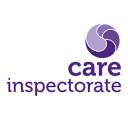Services must have sufficient numbers and availability of staff, forward planned over a minimum of a four-week period. Providers should consider overall numbers of staff in addition to the knowledge, skills, values, and experiences of staff that enable them to deliver high quality care. Staffing levels should include a mix of staff roles, experience, mentors, and keyworkers to meet people’s needs and wishes.
This part of the staffing method will complement the data generated by the staffing tool. Any current staffing tool is unlikely to reflect much of the ‘soft’ data described in the paragraph above. The assessment of staffing therefore needs to include the professional judgement of managers or senior staff who know their staff team, the people experiencing care in the service and daily changing tasks or circumstances.
For example, managers may adapt the staffing assessment to reflect staff who may be undertaking restricted duties due to health or wellbeing factors, or those who should not lone work.
An important consideration in this part of the staffing method will also be the number of staff required to meet the needs and preferences of people using the service, which takes account of the importance of relationships. This would include planning for staff resources required to enable people to connect to their local community and to maintain interests and activities that are important to them.
This part of the staffing method will also assess the staff resources needed to carry out non-direct care tasks, administrative care tasks, meetings, training, and supervision. It will also consider staff availability due to vacancies/staff absence/annual leave or outbreaks of infectious disease and the impact of this on people and staffing for instance. Services should also consider how working with volunteers could enhance outcomes for people experiencing care.
This part of the staffing method may highlight challenges and actions required to achieve high quality care and outcomes for people. It may also highlight difficulties with maintaining staff wellbeing, work-life balance, or staff retention. The Health and Care (Staffing) (Scotland) Act 2019 Act aims to promote transparency in staffing and support an open and honest culture throughout health and social care. The HCSA also seeks to support local decision-making, flexibility, and the ability to redesign and innovate across multi-disciplinary and multi-agency settings. It will therefore be important that every service provider uses the local and national reporting and communication pathways to highlight acute or persisting difficulties.
Good practice examples may include:
- Considering the diversity of the workforce and if it is balanced across the different protected characteristics (see Appendix), with the required number of staff could help to meet the wishes and preferences of people using the service. For example, requesting someone of the same sex to help with personal matters may support an individual in feeling that their privacy and dignity are respected.
- Considering key times when staff are needed, for instance, to support people with their morning routines, social interests and to have enjoyable mealtimes.
- Considering significant short-term impacts on staffing resources, such as end of life care, caring for people experiencing stress and distress or planned hospital appointments.
- Ensuring staffing takes account of significant events for example end of life care or people starting to use or leave the service.
- For key workers and senior staff, considering professional meetings, discussions, care plan reviews, report writing.
- Considering time for shift changeovers while retaining appropriate staffing levels to support effective and safe care.
- Considering staff team dynamics and impact of bringing in new, sessional or agency staff. This should also consider the initial time required to review personal plans before supporting people and time for experienced staff to carry out mentoring activities.
- Staff wellbeing is vital to staff retention. Measures to support staff wellbeing include wellbeing champions, wellbeing resources, wellbeing assessments or external supports.
- Flexible shift times which consider both the needs and wishes of people who use services, and the needs of staff may support recruitment and retention.
- Following guidance for safe recruitment, including international recruitment.
- Following good practice advice for the induction, integration and wellbeing of workers recruited from overseas.
- Consider outcome focussed workforce planning as part of the service aims and objectives. Could this include volunteers, apprenticeship schemes or students?
- Following guidance from the appropriate organisation for supporting volunteers, apprentices or students.


